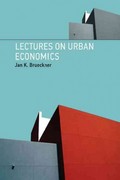Answered step by step
Verified Expert Solution
Question
1 Approved Answer
ECO 320 - Intermediate Microeconomic Analysis Final Exam August 17, 2016 Lists and Short Answers (20 points total) Please enumerate the following lists. 1. Define
ECO 320 - Intermediate Microeconomic Analysis Final Exam August 17, 2016 Lists and Short Answers (20 points total) Please enumerate the following lists. 1. Define the two welfare theorems. 2. List and briefly define the different types of price discrimination 4. If the demand function is q(p) = 100 p, what price should a monopolist set to maximize revenue (hint: it has something to do with the price elasticity of demand). True (with a reason) or False (with a reason or example) (20 points total) Please indicate whether these statements are true or false, and provide your reasoning (or example). Credit depends on the explanation. 5. Monopolies are always inefficient. 1 6. The production function f (x1 , x2 ) = x21 x22 has constant returns to scale. 8. Suppose there were a good that everyone consumes. If the government wanted to maximize a consumer's utility, it should impose a lump-sum tax on everyone rather than tax that good individually. (exam continues on next page) Problem 9 (10 points) Allison can earn $10 per hour. She can work up to 24 hours per day. She earns $40 in non-labor income. Her preferences for income and leisure are represented by the 1 utility function u(Y, L) = Y 2 + L. Optimally, how many hours would she work and how much money would she earn? Summarize your answer in a sentence. Problem 10 (10 points) A firm's production function is f (x) = x. a. What can we say about the firm's returns to scale? b. If the input costs w per unit, what does it cost to produce 10 units of output? c. Imagine, instead, that the cost function facing this firm is c(y) = 4y 2 + 16. At what quantity is total cost minimized? Problem 11 (20 points) An upscale buffet restaurant serves lunch and dinner. The cost function for this restaurant is c(q) = 2q + 100. The restaurant knows that people who visit for lunch and dinner are different. Lunch customers have the demand function qlunch (p) = 250 2p, while dinner customers have the demand function qdinner (p) = 200 p. a. The restaurant can obviously distinguish between lunch and dinner customers. What price will they serve lunch customers, and how many will they serve? What price will they serve dinner customers, and how many will they serve? How much total profit will the restaurant make? Summarize your answers in a sentence. b. Suppose there's a law passed that says all restaurants must charge the same prices no matter the time of day. What is the aggregate demand for the customers of this restaurant? c. Assume the market price is less than $100. If this law is in effect, what price will customers pay, and how many will the restaurant serve? How much profit will the restaurant make? Summarize your answers in a sentence. d. Explain the difference in profit (or the similarity in profit) you found in parts a and c. (exam continues on next page) 2 Problem 12 (20 points) Consider two people, Geordi and Beverly, who are on a ship. They each have two goods, tea and cookies. Geordi has 12 tea and 4 cookies, and Beverly has 0 tea and 2 cookies. a. Construct an Edgeworth box. Place tea along the x-axis and Geordi on the bottom left. Label the endowment point E b. Suppose each person's preferences are represented by the utility function u(tea, cookies) = 1 1 tea 2 cookies 2 . The last time they were in port, tea sold for $4 and cookies for $2. If they were in port, what would be each person's optimal demand? c. The captain of the ship, Jean-Luc, decides that this initial allocation between Geordi and Beverly is unfair, and decides to take some tea and cookies from Geordi and give them to Beverly. Afterwards, Geordi has 10 tea and 1 cookie and Beverly has 2 tea and 5 cookies. Label this point on the Edgeworth box E 0 . Consider a monotonic transformation of each utility function to u(tea, cookies) = tea cookies. What is the utility of E 0 for each? d. Plot the indifference curves for Beverly and Geordi that pass through E 0 . Indicate a point they would trade to (not just on the graph, write down the coordinates). Why would they trade to this point? e. Jean-Luc studied microeconomics at the Sorbonne. Why did he encourage Geordi and Beverly to trade, rather than deciding himself how much tea and cookies each person should get? 3
Step by Step Solution
There are 3 Steps involved in it
Step: 1

Get Instant Access to Expert-Tailored Solutions
See step-by-step solutions with expert insights and AI powered tools for academic success
Step: 2

Step: 3

Ace Your Homework with AI
Get the answers you need in no time with our AI-driven, step-by-step assistance
Get Started


